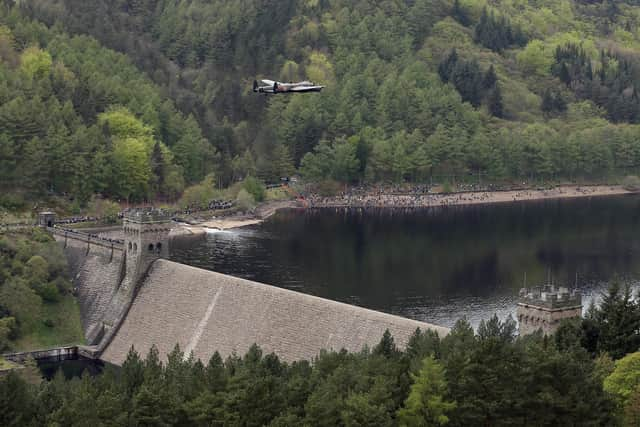Are reservoirs filling up? Water levels in reservoirs across the UK and are they full again
and live on Freeview channel 276
Heavy rainfall throughout July has drenched the UK but has it helped refill reservoirs across the country?
Using data from the end of June, it was predicted that the outlook for July is for below-normal river levels in the north and west of the UK, and for normal to below-normal river flows elsewhere.
Advertisement
Hide AdAdvertisement
Hide AdJune rainfall was below average across the UK, Some areas, including south-west England, East Anglia and south Wales, received less than half of the expected rainfall. There were some isolated areas of above-average rainfall in central England and Scotland attributed to heavy, and often thundery, showers.
However, how has this impacted reservoir levels?


Reservoir levels in the UK
In the Thames region, at the end of June 2023, reservoirs in London were 95% full (96% full in West London and 91% full in Lee Valley), which is above average for the time of year.
Farmoor Reservoir in Oxfordshire was 98% full, which is above average for the time of year.
In May, Yorkshire Water said its reservoirs were now 95% full, as reservoir levels have recovered from last year's drought. It added the county was in "a better position than last year" thanks to a wet spring, water conservation and ongoing work to tackle leaks.
Advertisement
Hide AdAdvertisement
Hide AdA Yorkshire Water spokesperson said: "Our reservoir levels have recovered from last year's drought.
"A wetter than usual March and April, increased leakage activity, and our customers' efforts to reduce water use means we move into the warmer months in a better position than last year."
However, a report released in July showed that although stocks in Yorkshire were 3% above the long-term average (LTA) stocks decreased steadily throughout the month at a rate between 2% and 4% of total Yorkshire reservoir stocks each week. Reservoir stocks are now 6% below the LTA for the end of June.
As of 24 July 2023, water shortage levels in the Severn Trent region are at 78.8% of capacity - which is down from the 91.9% capacity on 28 May 2023.
Advertisement
Hide AdAdvertisement
Hide AdFor United Utilities, which provides water for the North East, the water levels in the reservoir are at 71.6%, which is lower than the average (73.1%).
In June, average reservoir levels across Scotland are at 85% and this is 4% lower than average for this time of year and 6% lower than this time last year.
In Wales, Severn Trent Water says that current water storage levels in the Hafren Dyfrdwy region are at 69.5% of capacity, which is down from 78.3% on 29 May 2023.
Why do reservoir levels fall?
In a combination of climate change - with the increasing weather - and below-yearly rainfall, reservoir levels can fall. Although May saw a replication since last year's drought, water levels have seemingly dropped again across the UK.
The UK experienced one of the hottest Junes on record, which has had an impact on the nation's reservoirs level.
Comment Guidelines
National World encourages reader discussion on our stories. User feedback, insights and back-and-forth exchanges add a rich layer of context to reporting. Please review our Community Guidelines before commenting.
